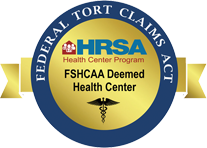This year, Eating Disorder Awareness Week will be recognized from February 22-28. At least 9% of people in the US will experience an eating disorder during their lives. I am frequently surprised to learn of how misunderstood eating disorders are. Others are often puzzled by a person’s difficulty with food. I have often heard “Why can’t you just eat?” It is difficult for us to understand something that we ourselves have never struggled with; when it comes to food, which is meant in part to spark our senses and give us pleasure, many who are unaffected personally struggle to understand what an eating disorder is. So, what aren’t eating disorders?
Eating disorders are not choosing to eat very little, or choosing to eat very large amounts of food, so much so that we feel sick and very uncomfortable. Eating disorders have little to do with choice, and more to do with feeling controlled by the eating disorder itself. Most individuals with eating disorders do not want to continue with their eating disorder behaviors, but struggle to recover without professional treatment.
What exactly is an eating disorder, then? All eating disorders involve extremes; this can be about foods a person is “allowed” to eat, amounts of food, what a person does after eating, attitudes about “healthy” foods, or body image. These extremes develop as a result of many factors, including a person’s genetics, personal experiences (being taller/shorter/smaller/bigger than their peers; being teased about appearance, modeling from others about food and body image, etc.), psychological factors (perfectionism, a tendency to obsess over appearance, self-esteem, etc.), and cultural factors (our culture as a whole is hyper-focused on food, diets, weight loss, nutrition, etc.). Historically, girls and women were more likely to develop eating disorders.
Over the last 10 years, rates have risen across the board. Eating disorders can develop across the lifespan, though are more common to emerge at critical times, such as puberty, entrance into adulthood, after diagnosis of a medical condition that requires adjustment in diet and/or exercise, after chronic dieting, or after major stressors.
Eating disorders are among the deadliest of mental health diagnoses.
Eating disorders vary greatly across diagnosis. There are currently 8 diagnosable eating disorders. The most common include anorexia nervosa, bulimia nervosa, and binge eating disorder.
Most people have heard of anorexia nervosa, which is, in a nutshell, feeling very concerned about weight or body shape, and as a result, restricting or limiting food and sometimes water to attempt to control one’s weight and/or size. Up to 3% of the general population will be diagnosed with anorexia. In the past, a person had to be a certain size to be diagnosed with anorexia. Thankfully, this has changed so that individuals can be correctly diagnosed (and treated) earlier on in their eating disorders.
Another common eating disorder is bulimia nervosa, which affects up to 5% of the population. Bulimia involves great concern about a person’s body weight and size, eating very large amounts of food (binging), and then engaging in what mental health professionals call compensatory behaviors (over-exercising, vomiting on purpose, not eating the next meal, taking diuretics or laxatives) in an effort to get rid of the food or calories of the binge.
Binge eating disorder affects up to 5% of the population and involves experiencing a poor body image, binging (eating to the point of sickness or extreme fullness), and feeling guilt and shame afterwards. Unlike bulimia, individuals with binge eating disorder do not engage in compensatory behaviors.
Treatment often involves inpatient or residential treatment at an eating disorder facility. Some individuals can recover on an outpatient basis with a team of medical professionals including a therapist, dietitian, primary care provider (PCP), dentist, and often a team of specialists, as eating disorders have very negative effects on many systems in the body. Common complications include heart problems, bone density issues, dental problems, and gastrointestinal problems, among others. Recovery is sometimes short, but in many cases, eating disorders are often stubborn and require several bouts of treatment.
There are many different warning signs of an eating disorder, including unexpected weight loss/gain, poor body image, worrying about food, avoiding eating in front of others, going to the restroom immediately following eating, low heart rate and/or blood pressure, hiding food, and more. If you suspect you or a loved one are suffering from an eating disorder, please take it seriously and speak with your primary care provider who can refer you for evaluation.








